10 animals that have become extinct - fortunately for humans
By Pictolic https://pictolic.com/article/10-animals-that-have-become-extinct-fortunately-for-humans.htmlLong before the appearance of humans, who today occupy a dominant position among creatures, the planet was inhabited by real monsters. Fortunately or not, their existence for one reason or another turned out to be non-eternal. It is worth noting that, perhaps, if they had not become extinct, then man would not have had a chance to stand up to such animals.
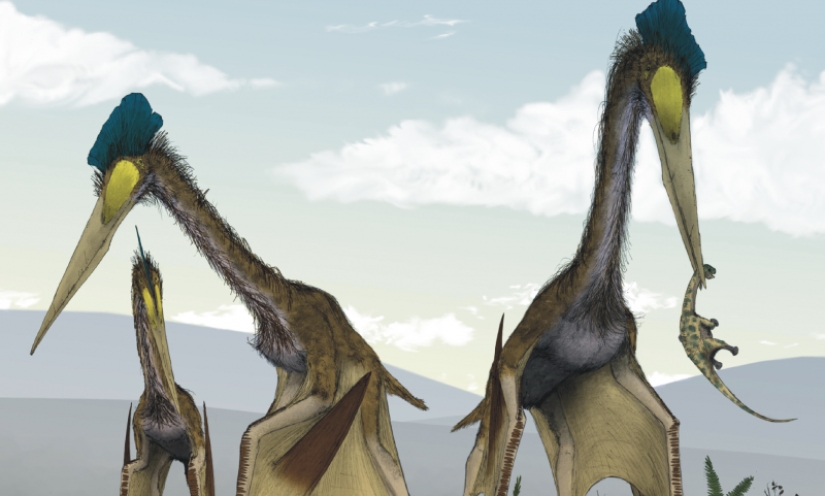
Argentavis lived 5-8 million years ago in Argentina. It weighed about 70 kg, had a height of 1.26 m, its wingspan reached 7 m (which is twice the wingspan of the largest modern birds - albatrosses). The skull of argentavis was 45 cm long, and the humerus was more than half a meter long. All this makes argentavis the largest flying bird known to science in the entire history of the Earth. It is close in size to the Cessna-152 airplane.
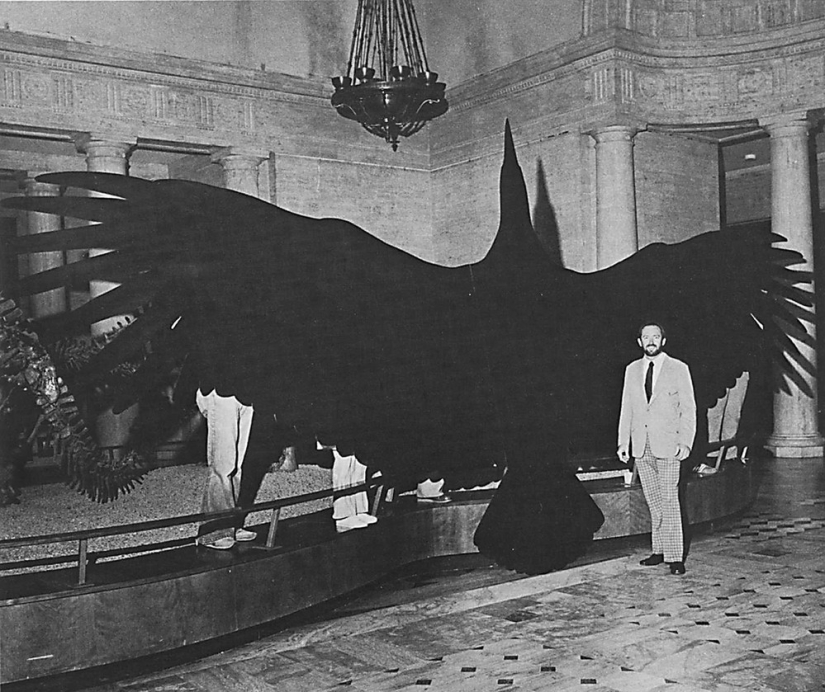
This creature resembled a bald eagle with a wingspan of about 8 meters and feathers the size of a samurai sword. It was believed that it hovered in the air like a glider and could reach speeds of 240 km/h. Experts still don't know exactly how this bird could take off and land.
Dunkleost was the largest of the prehistoric shell fish placoderms. His head and chest were covered with an articulated armored plate. Instead of teeth, these fish possessed two pairs of sharp bone plates that formed a beak structure. Dunkleostes was probably exterminated by other placoderms, which had similar bony plates for protection, their jaws powerful enough to cut and pierce armored prey.
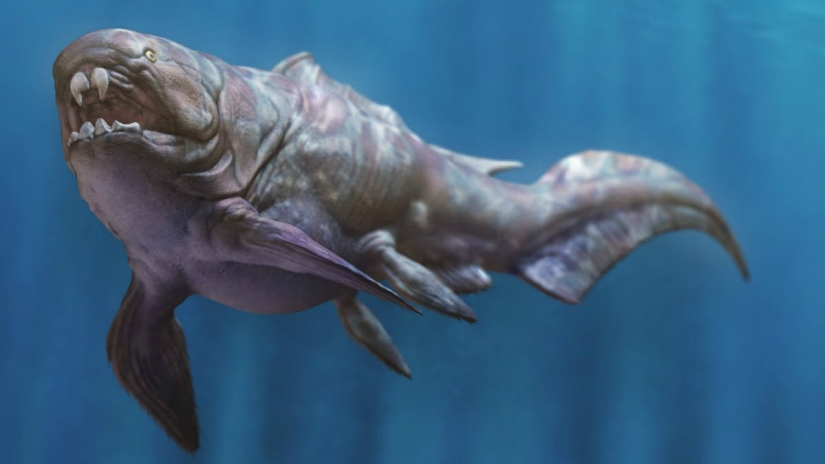
One of the largest known specimens found was 10 meters long and weighed four tons, which makes it one of the fish that you definitely wouldn't want to catch on spinning! This fish was completely unscrupulous in eating, eating fish, sharks and even fish of its family. But they probably suffered from an upset stomach provoked by the fossils of semi-digested fish remains. Scientists from the University of Chicago concluded that dunkleost had the second strongest bite among fish. These giant armored fish became extinct during the transition from the Devonian to the Carboniferous period.
This giant sea creature looked like a cross between a scorpion and a lobster with a tapering tail and flat fins. Crustaceans, although similar to modern scorpions, still belong to another species - eurypterids. They lived on earth for many millions of years, but became extinct at the end of the Permian period.
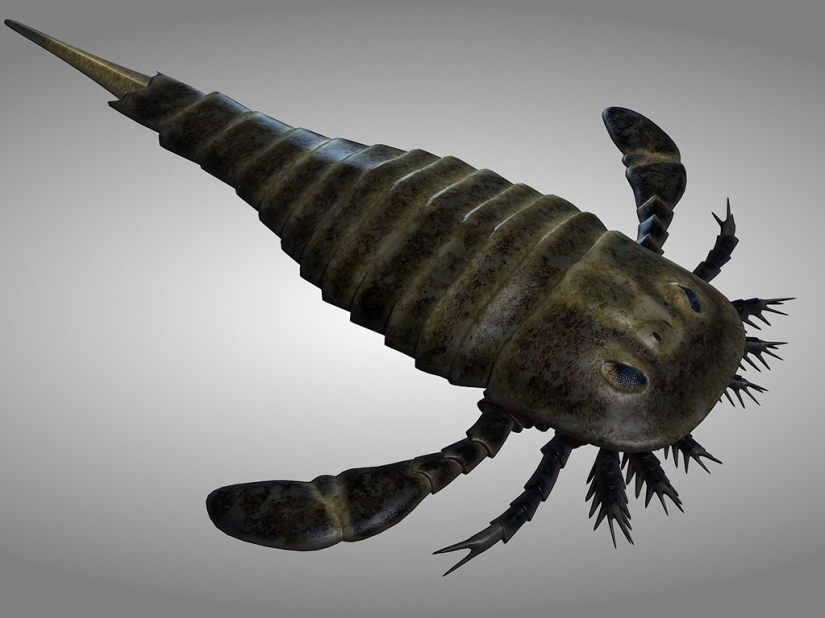
Early forms lived in shallow waters in the seas. About 325-299 million years ago, most of them moved to life in fresh water. This group included individuals who are considered the largest arthropods in the history of the planet. The body length of such creatures reached two and a half meters.
Perhaps the largest extinct terrestrial predatory mammal that lived in the Middle-Late Eocene epoch in Central Asia. Andrewsarch is represented as a long-bodied and short-legged beast with a huge head. The length of the skull is 83 cm, the width of the zygomatic arches is 56 cm, but the dimensions can be much larger.
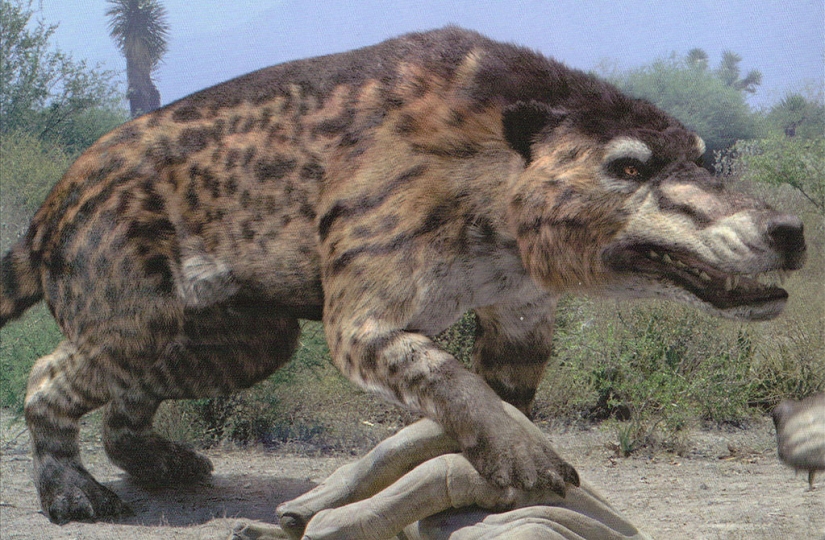
According to modern reconstructions, assuming relatively large head sizes and shorter leg lengths, the body length could reach up to 3.5 meters (without a 1.5-meter tail), shoulder height - up to 1.6 meters. The weight could reach 1 ton. Andrewsarchus is a primitive ungulate, close to the ancestors of whales and artiodactyls. Andrewsarchus lived from 45 to 36 million years ago.
This creature is called one of the largest, if not the largest of all who have ever plowed the expanses of heaven. Its name is associated with the Aztec god Quetzalcoatl, who was known as a feathered serpent. The flying creature lived in the Late Cretaceous period. He was a real king of the sky, with a wingspan of 12 meters and a height of almost 10. However, its weight was quite small - up to a hundredweight, thanks to the hollow bones.
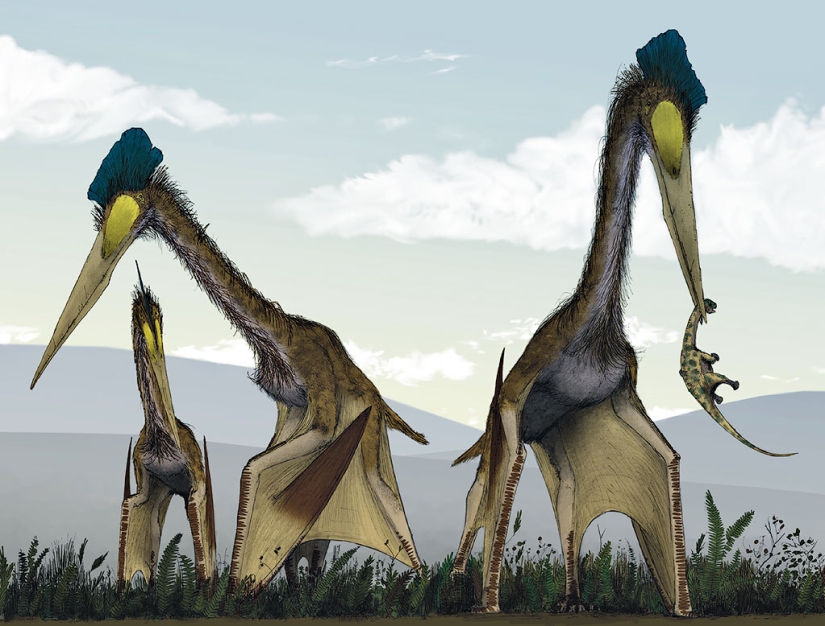
The creature had a pointed beak with which it collected food. The long jaws were not hampered by the lack of teeth, and the main food could be fish, the corpses of other dinosaurs. Fossils were first discovered in Big Bend Park, Texas, in 1971. It is believed that while on the ground, the four-legged animal was so strong that it could take off right from the spot, without a run.
Of course, it is difficult to compare this huge animal with modern ones. Since it was a pterosaur, it had no direct descendants left. But at one time it was most associated with the pteranodon, which is already comparable to modern birds, in particular with the marabou stork. They are brought together by two facts — a larger than usual wingspan and a predilection for carrion as food.
His name speaks for itself. It was a huge monkey, a relative of the orangutan, which lived in the bamboo thickets, jungles and mountains of China, India and Vietnam during the Pleistocene. Gigantopithecus grew up to 3 m and weighed up to 550 kg! They were very strong, which was to their advantage in protecting them from predators.
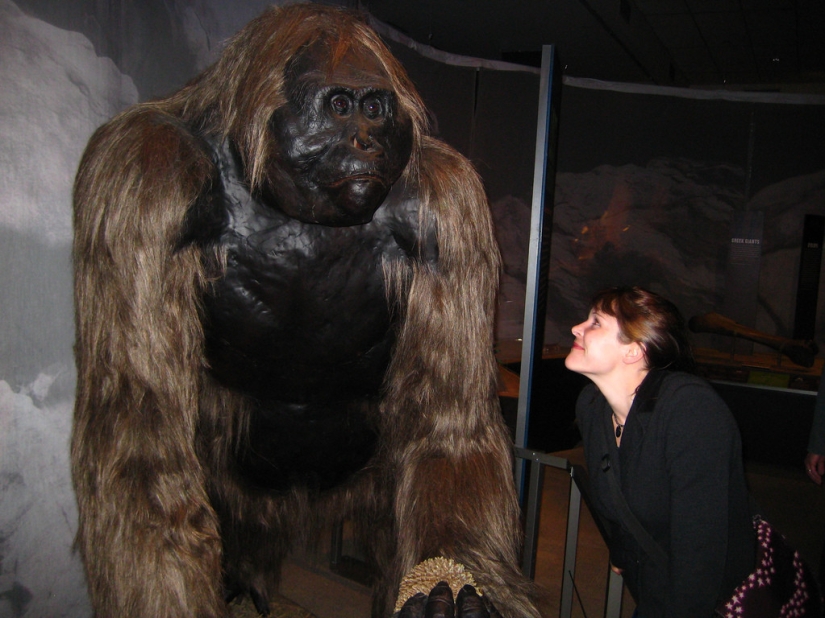
Gigantopithecus became extinct 300 thousand years ago, most likely due to hunting by early humans or due to climate change. Of course, all bigfoot lovers like to think that gigantopithecus somehow survived in remote parts of the Himalayas and that there is still hope to see them.
A predatory marsupial of the order Sparassodonta, which lived in the Miocene (10 million years ago). It reached the size of a jaguar. On the skull, the upper canines are clearly visible, constantly growing, with huge roots continuing into the frontal area, and long protective "blades" on the lower jaw. The upper incisors are missing. He probably hunted large herbivores.
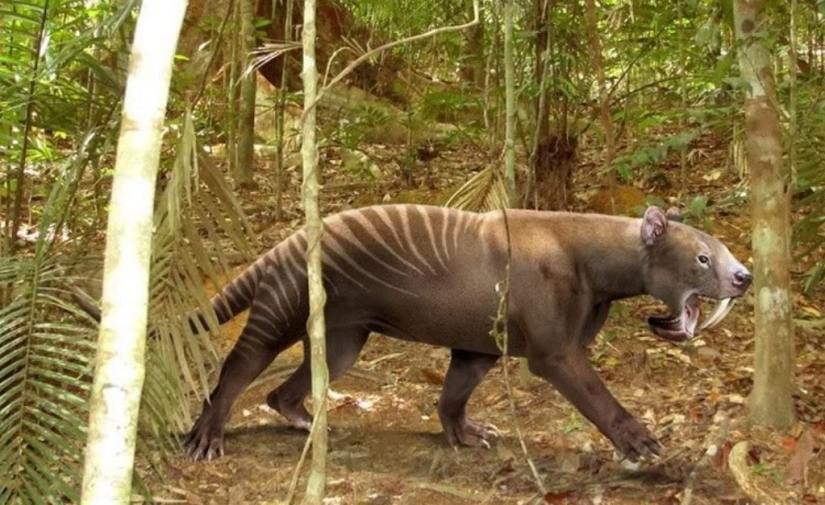
Tilakosmila is often called a marsupial tiger, by analogy with another formidable predator - the marsupial lion. It became extinct at the end of the Pliocene, unable to compete with the first saber-toothed cats that settled the continent.
This animal is famous for its unusual dental spiral. It is believed that the helicoprion lived in the Carboniferous period. Scientists believe that this fish was one of the few who survived the Permo-Triassic mass extinction. But at the end of the Triassic period, the creature still died out. Although there are few fish remains left, scientists have discovered an unusual dental spiral and several jaw bones. With their help, possible images of the animal were recreated.
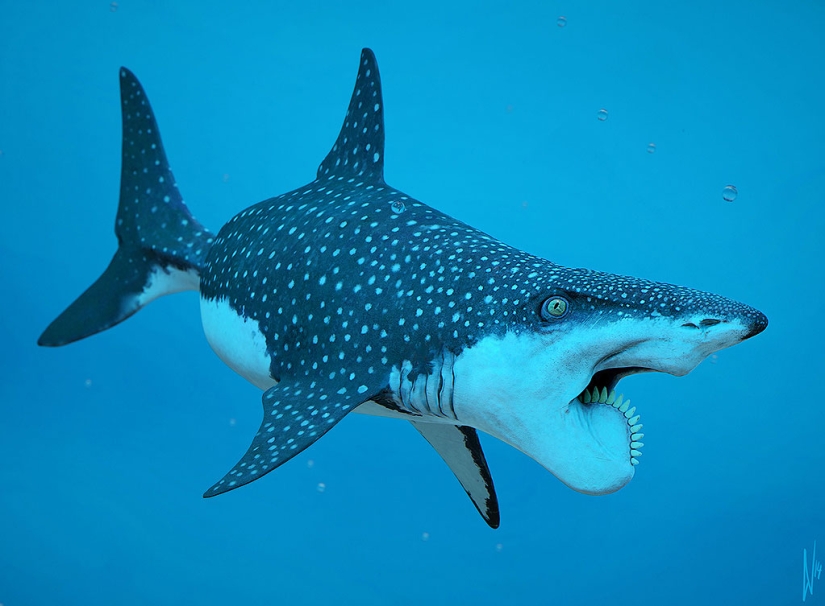
It is known for sure that he had teeth similar to a circular saw located on the lower jaw. There were so many teeth that the older ones were pushed into the middle, creating a new spiral. However, new theories say that the spiral could be located in the area of the pharynx, while remaining invisible from the outside. Such a structure of a marine inhabitant made it possible to hunt better. So, with a spiral, it was possible to cut off tentacles, injure fish or dig up shellfish.
The length of such unusual creatures reached 2-3 meters, based on the diameter of a typical spiral of 25 centimeters. However, there were also dental formations of 90 centimeters, which gives reason to believe that the length of the helicoprions is up to 9-12 meters. Although the fish are very similar to the modern shark, they represented primitive cartilaginous, close to the ancestors of modern marine predators.
Known as Fororacos, these birds were the main predators in South America and in some areas of North America during the Miocene, Pliocene and Pleistocene periods. Then they were replaced by big cats and other carnivorous mammals. Fororakosovye could not fly, but they ran very fast (according to some scientists, as fast as a cheetah).
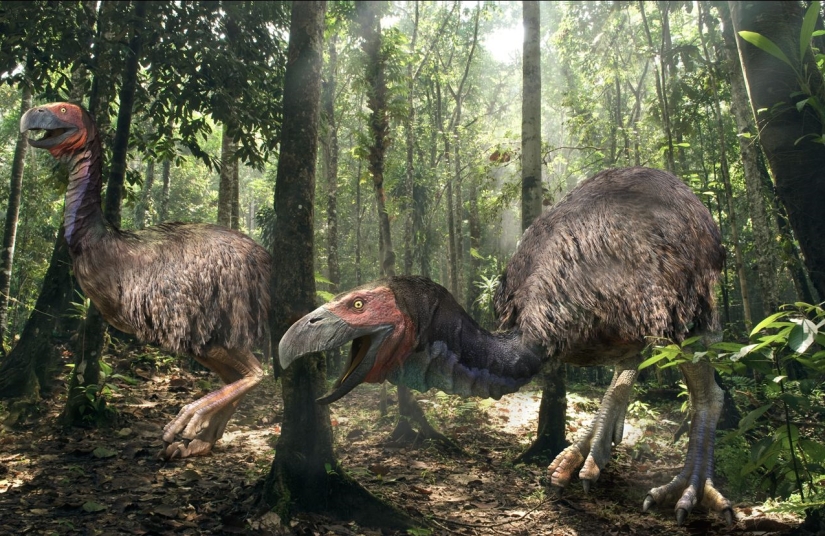
They were very large, up to 3 m in height and weighing up to half a ton! Their main weapon was a head up to 1 m long, which allowed them to swallow whole prey the size of a dog. But the worst thing is, thanks to the curved beak, the terrible birds could kill and eat an animal the size of a horse.
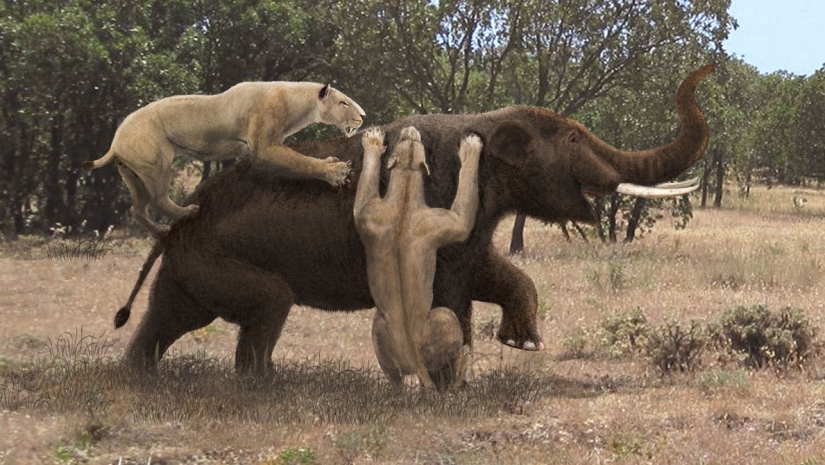
A giant hyaenodontid that lived in the Early and Middle Miocene (20-15 million years ago). It is considered one of the largest land mammal predators that have ever existed. Its fossilized remains are found in Eastern and Northeastern Africa and in South Asia. The length of the body with the head was about 4 m, the length of the tail is presumably 1.6 m, the height at the withers is up to 2 m. The weight of megistotherium is estimated at 880-1400 kg.
Recent articles

Many have heard about this disease, like rabies, can even say that it is a result of the animal bite, and the victim will have to ...

The upcoming trip is always so joyful and exciting, and it seems that nothing can spoil the upcoming vacation! But drawing up a ...

The scooter, once considered nothing more than a child's toy, has become a full-fledged personal transport these days. Our streets ...